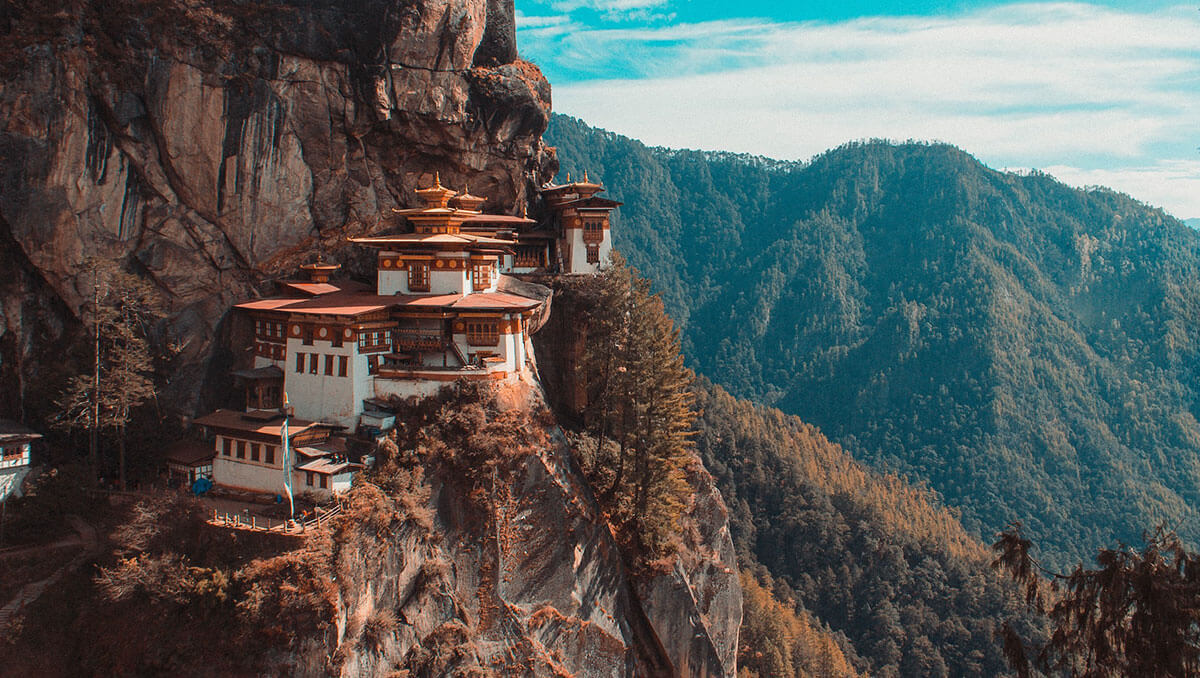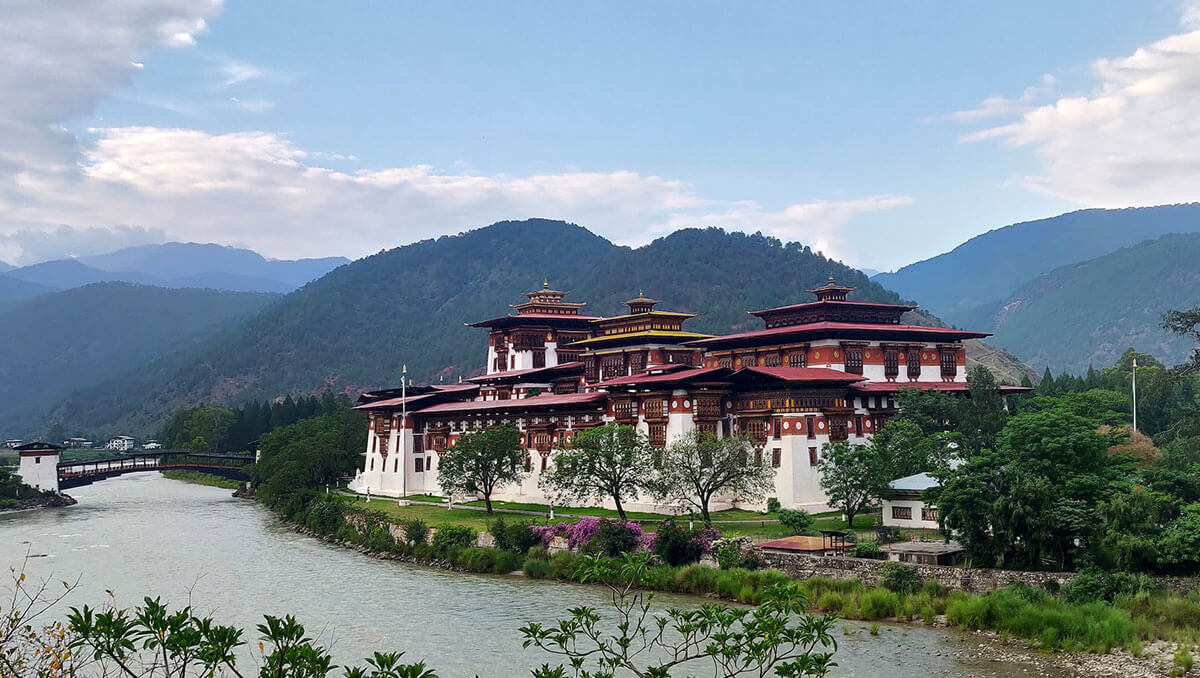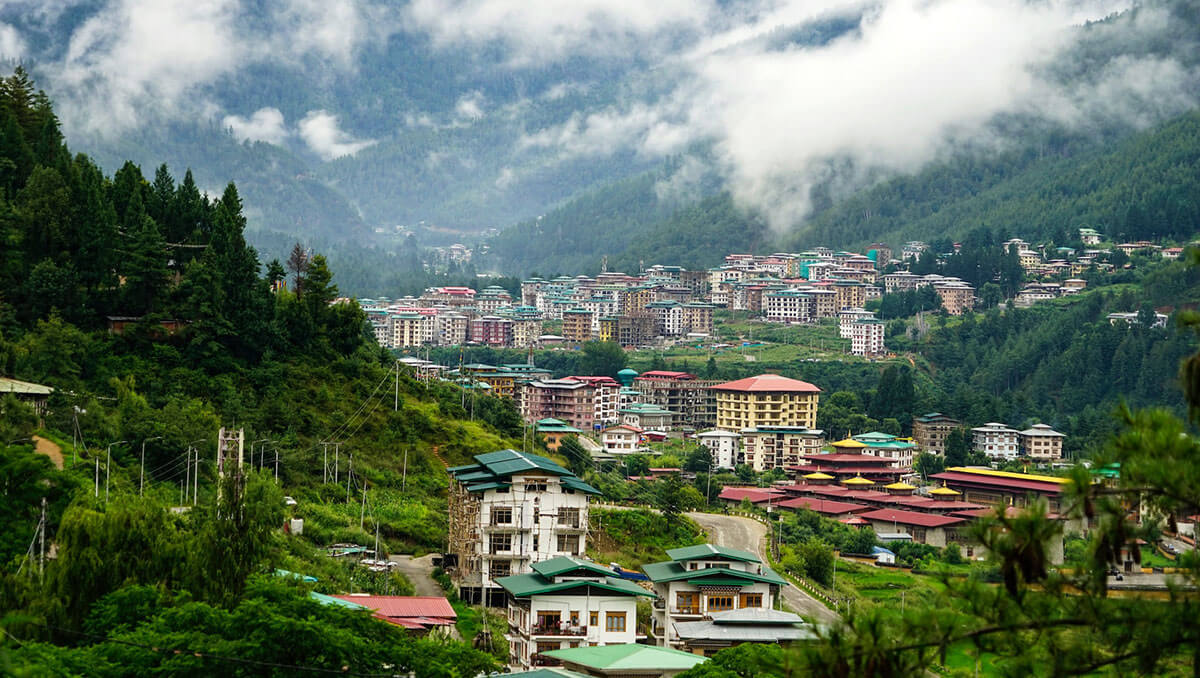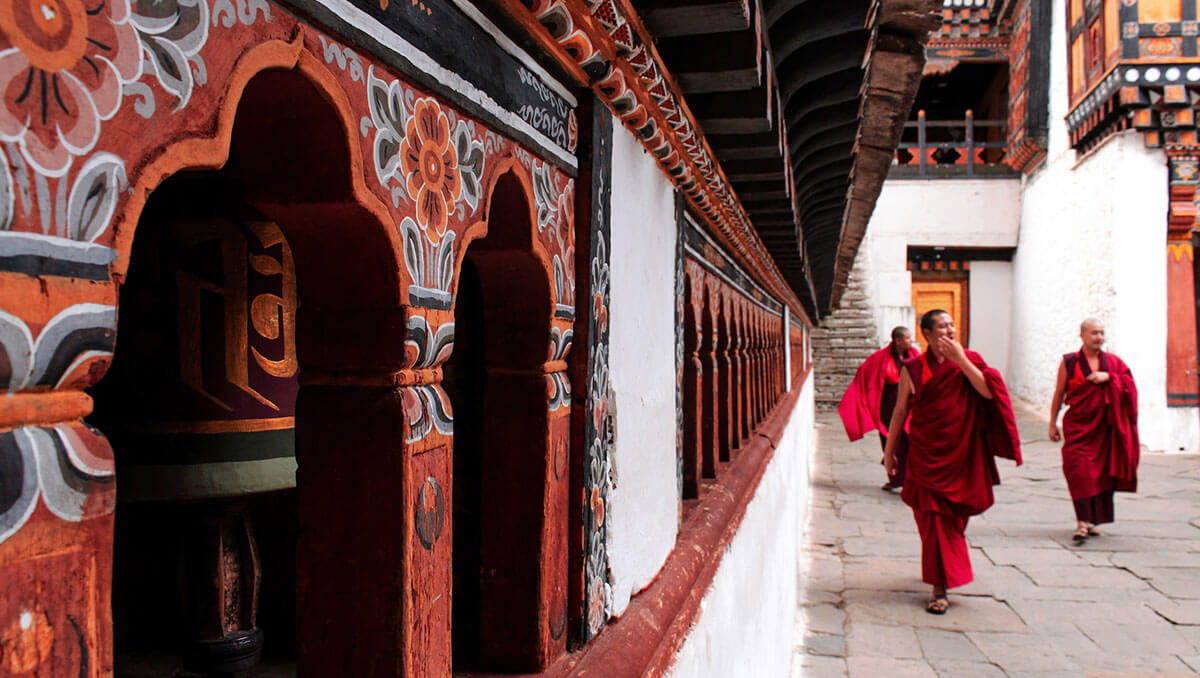



Arrive at Paro International Airport. On arrival, proceed to the immigration counter. Complete Immigration formalities and you will be met with your chauffeur/ guide at the outside of the airport terminal. You will be transferred to Thimphu.
Thimphu - is the capital and the largest city of the Kingdom of Bhutan. Thimphu is the political and economic hub of Bhutan. The city is located on the bank of River Wang Chuu. Thimphu contains most of the important political buildings in Bhutan, including the National Assembly of the newly formed parliamentary democracy and the residence of the King. Thimphu holds a fascinating four-day festival, held every year during autumn (September/ October). Arrive at Thimphu and check-in to your hotel. Later proceed for a short sightseeing of Thimphu. (Sightseeing on this day won't be possible if the flight arrival time is beyond 2 pm)
Memorial Chorten - On the western side of Thimphu's Memorial Chorten, a row of wooden platforms sits in the long grass. Each has been polished smooth by the prostrations of faithful worshippers who gather here in sun, rain or snow, to pay their respects to His Majesty Jigme Dorji Wangchuck (1928-1972), the Third King of Bhutan. The Chorten, with its elaborate golden peak representing the crescent moon and sun, is one of Thimphu's most striking religious landmarks. Constructed in 1974, the Tibetan-style chorten's whitewashed exterior boasts richly decorated chapels - one facing each of the cardinal directions. Overnight stay in Thimphu.
Breakfast at the hotel and proceed for full day sightseeing tour of Thimphu.
Kuensel Phodrang - The statue was cast in bronze in China and transported by sea and road to this site once occupied by the palace of Druk Desi, a secular ruler of Bhutan in the eighteenth-century. At its completion, the statue will contain 125,000 gilded Buddha statues and a wealth of other statuary.
Takin Reserve & Mini Zoo - Add to Wish List Hidden in a fold of the forest-draped hills high above Thimphu, a herd of takin make their home in the Mothithang Takin Preserve. Formerly a small zoo, the king decreed that the animals should be freed rather than kept in captivity. However, instead of wandering deeper into the hills, the tame takin took to the streets of Thimphu, where they became a traffic hazard as they foraged for food.
Anim Dratshang (Nunnery) - On a hillside above Thimphu's Tashichho Dzong, just off Gaden Lam, stands Thangtong Dewachen Dupthop Nunnery. Home to around 60 nuns, the modest structure was built in 1976 by the 16th incarnation of Thangtong Gyelpo, the famed fifteenth-century "Iron Bridge Monk" who forged chain-link bridges that still span several of Bhutan's fast-flowing rivers. The road to the nunnery offers magnificent views of Tashichho Dzong, while the small complex houses a covered chorten and an unusual pillar topped with two carved deer (symbolic of the Deer Park at Sarnath, where Buddha first taught after his enlightenment) and a wheel of law.
Folk Heritage Museum - The Folk Heritage Museum, located on the outskirts of Thimphu, recreates a traditional Bhutanese family home inside a beautiful 19th century rammed earth and timber building. Here, the family's prized possessions are on display: shiny wooden bowls line the kitchen shelves, richly patterned fabrics hang alongside aged leopard fur bags in the room next door, and gold glints from thangkas hung in the family's altar room.
Royal Textile Academy & Museum - Intricately patterned wild silk kiras from Lhuentse hang alongside rough nettle fiber cloth from Zhemgang in Bhutan's excellent Royal Textile Academy. The museum, housed in an impressive modern building, celebrates the country's vibrant and varied tradition of hand weaving. From the towering applique thangka that overlooks the entrance hall and the sumptuous garments on display in the Royal Gallery to mannequins dressed in simple herders' clothing from Laya, the museum offers an unparalleled chance to learn about and appreciate this unique aspect of Bhutanese culture.
Handicrafts Market - An interesting market with local items and bargain price handicraft goods.
Tashichho Dzong - Standing proudly on the western bank of the Wang Chhu a few kilometers north of central Thimphu, Tashichho Dzong looks every inch the seat of government. While the National Assembly no longer convenes inside the fortress's whitewashed walls, today the dzong still houses the throne room and the king's offices as well as the ministries of home affairs and finance. Overnight stay in Thimphu.
It is good to make your booking two months prior in advance. In the event of cancellation of any trek/adventure activity due to any reason, it is compulsory to notify us in writing. Cancellation charges will only be effective from the date we receive your request in writing.
If the trek is cancelled by us due to any reason (heavy snowfall, rainfall, natural disaster, etc.) then the refund will not be initiated but you can go on the same trek another year.